How to win friends and influencers like Billion Dollar Boy

Billion Dollar Boy is a London-based global influencer agency which is lucratively capitalising on social media.
Founded in 2014 by three friends (CEO Edward East, President Permele Doyle and CSO Thomas Walters) Billion Dollar Boy now has a team of over 50 employees in London, New York and New Orleans. The company has since created over 23,000 pieces of content in 17 different languages, covering 38 countries.
As stated on the Billion Dollar Boy website, influencer marketing was worth $200 million in 2014 and is expected to reach $10 billion by 2022. Billion Dollar Boy takes their piece of the pie by focusing on paid influencer campaigns, curated content, paid advertising and studio services.
SBillion Dollar Boy understands the importance and power of social media influencers who can amplify their clients’ brand message. Clients include Grand Marnier, PepsiCo, Bose, NARS Hero Products, Bobbi Brown, BMW, Zalando, Garnier and many more.
For Grand Marnier, 13 influencers were used to spread 232 pieces of content, raking up 873k impressions. Billion Dollar Boy’s campaigns for PepsiCo involved 427 social media posts, garnering 54 million impressions, which ultimately led to a 15% increase in purchase intent.
Billion Dollar Boy is a London-based global influencer agency which is lucratively capitalising on social media.
Founded in 2014 by three friends (CEO Edward East, President Permele Doyle and CSO Thomas Walters) Billion Dollar Boy now has a team of over 50 employees in London, New York and New Orleans. The company has since created over 23,000 pieces of content in 17 different languages, covering 38 countries.
As stated on the Billion Dollar Boy website, influencer marketing was worth $200 million in 2014 and is expected to reach $10 billion by 2022. Billion Dollar Boy takes their piece of the pie by focusing on paid influencer campaigns, curated content, paid advertising and studio services.
SBillion Dollar Boy understands the importance and power of social media influencers who can amplify their clients’ brand message. Clients include Grand Marnier, PepsiCo, Bose, NARS Hero Products, Bobbi Brown, BMW, Zalando, Garnier and many more.
For Grand Marnier, 13 influencers were used to spread 232 pieces of content, raking up 873k impressions. Billion Dollar Boy’s campaigns for PepsiCo involved 427 social media posts, garnering 54 million impressions, which ultimately led to a 15% increase in purchase intent.

Just like traditional advertising, photographers, designers and dynamic content creators are hired by Billion Dollar Boy to produce images and videos that audiences engage with. Unlike traditional advertising, Billion Dollar Boy manipulates social media and sharing behaviours to spread their content.
Revolutionising traditional advertising, Billion Dollar Boy has recently launched a TV initiative to combat production problems caused by the ongoing Coronavirus pandemic.
BDB TV aims to draw upon the company’s pool of influencers to create content that can be created from their own home, cutting down on production costs whilst adhering to safe pandemic restrictions.
Billion Dollar Boy creatives would generate the script and storyboard, much like traditional TV and send the briefs to their influencers. The influencers would then create the content, which would be approved by the client, and BDB TV would piece it together and make the edits.
“After discussions with colleagues in the industry it is clear that many traditional creative agencies and clients are struggling to create new, relevant and appropriate content during the lockdown,” CEO Edward East said.
“Influencer content is high quality, cost-effective, quick to produce and relevant now. BDB TV works with our network of influencers to supply TV ads to our brand clients so they can effectively fill their airtime.”
Billion Dollar Boy is also working with the The International Federation of Red Cross (IFRC) and Red Crescent Societies to combat misinformation about Coronavirus spreading on social media.
In an effort to educate young people about the disease, IFRC has recognised the power of viral information. Quoting global research company Nielsen, IFRC highlighted how 33% of people are spending more time on social media during lockdown. Billion Dollar Boy has thus stepped in to partner with the charity.
Every week, the IFRC sends vital information to disseminate misinformation to influencers within Billion Dollar Boy’s network, who would then share the message with their followers.
“Instead of being continually vilified, influencers can now put their vast skill sets to work delivering potentially lifesaving approved messaging to millions of people when it is needed the most,” he said.
Billion Dollar Boy’s success has not gone unrecognised by the advertising industry either. The Institute of Practitioners in Advertising (IPA) has accepted Billion Dollar Boy into their trade body, making the British company the first influencer marketing agency to be admitted.
The pair will work closely together to develop influencer marketing channels within the industry.
“This is a very important milestone for us and for influencer marketing. To take a seat at the top table of advertising not only shows how grown up and serious we are as a business but how grown up and serious the sector has become. This is proof that the days of the Wild West are far behind us,” said Billion Dollar Boy CSO Thomas Walters.
The ‘Wild West’ of digital is often the term used by influencer marketing sceptics. In an Op-Ed written by CEO Edward East, the entrepreneur refuted the term, highlighting that a 2018 statistic expected the industry to be worth $10 billion and as of 2019, the industry was already worth $15 billion.

In addressing one of the sceptics’ biggest concerns – fake followers – East said that CNBC’s claim of the issue costing advertisers $1.3 billion was “vastly over-exaggerated.”
“At the end of the day, good marketers understand the issue,” East writes. “They know fake followers exist and how to deal with them. There is also a growing number of tools (we have one ourselves) that can tell them in advance how many ‘suspicious accounts’ an influencer has. It can also be circumvented by measuring success in engagement, and not reach.”
East emphasized that the intelligence of the consumer should not be insulted nor underestimated. “Essentially, we all need to stop treating consumers (and clients) like they don’t understand how it all works,” he states.
Whilst the industry rejected influencer marketing, East saw the potential in the strategy and thus was able to drive Billion Dollar Boy to success.
The CEO went on to write how the industry has evolved with the changes in social media and how the focus will shift towards alternative platforms.
“It’s interesting how campaigns have shifted through YouTube/ Twitter/ Vine / Facebook / Instagram / Instagram Stories,” he said. “But with more influencers than ever before entering the market, more will move over to emerging but less saturated platforms such as TikTok and YouTube.”
East also offers his views on the future of the industry, which he believes will be more TV-based.
“With major content owners (Netflix, Disney, HBO, Amazon) creating their own streaming services, influencers will seize the opportunity to create their own channels on them,” he concludes. “The earning potential and reach could be huge and they’ll be able to monetise their content and take back a large chunk of advertising pounds and dollars previously soaked up by Google and Facebook. 2020 could see the appearance of an influencer-run, managed and monetised TV channel.”
The power of social media influencers should not be underestimated. As Billion Dollar Boy has repeatedly demonstrated, utilising social media to lead campaigns is an effective and powerful tool that generates targeted engagement.
In terms of other agencies looking to expand into the industry, Billion Dollar Boy serves as proof-in-the-pudding that influencer marketing is lucrative, debunking the Wild West theory.
For companies looking to advertise, linking up with creative agencies to generate campaigns is not only fruitful but is becoming increasingly necessary. As it always has been, the advertising field is highly competitive and agencies who are able to push their clients’ content to their desired audiences are vital in today’s digital age.
With the ongoing global pandemic, customers are practically waiting at home behind their screens for content to be pushed towards them.
If you’re a creative agency looking to expand, it is essential to grow verticals that specialise in such advertising practices.
Words by Cohan Chew
Portrait by Alex Casserley
Capital A is an agency M&A expert. We only work with creative agencies. If you’re interested in talking to us about your buy & build strategy, fill out this brief questionnaire.
